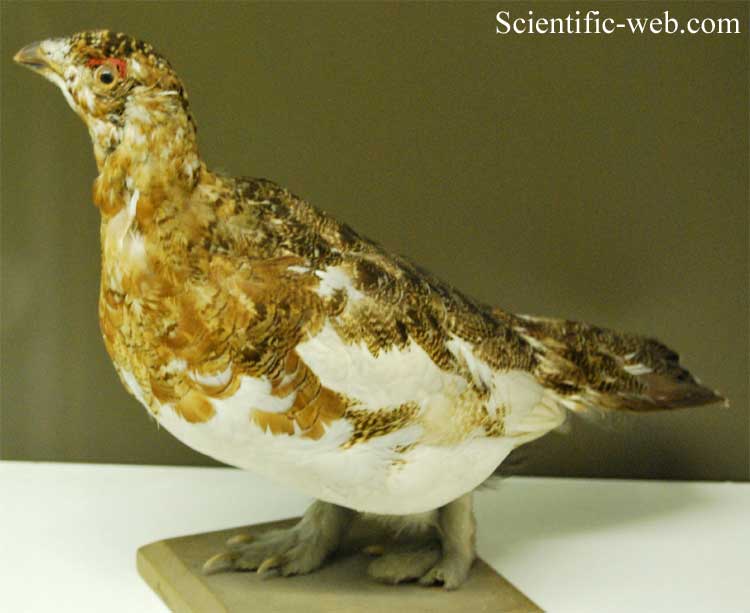Lagopus lagopus , Photo: Michael Lahanas Cladus: Eukaryota Name Lagopus lagopus Linnaeus, 1758 Reference Systema Naturae ed.10 p.159 Vernacular names ----------- Lagopus lagopus is the Willow Grouse of Europe, and called Willow Ptarmigan in North America. It is a medium-sized gamebird in the grouse subfamily. It is a sedentary species, breeding in birch and other forests and moorlands in the tundra of Scotland, Scandinavia, Siberia, and of Alaska and northern Canada. It is the state bird of Alaska. Description In summer male's plumage is marbled brown, with a reddish hue to the neck and breast, a black tail, and white wings and underparts. It has two inconspicuous wattles above the eyes, which become prominent in the breeding season. The female is similar, but lacks the wattles and has brown feathers strewn all over the belly. In winter, both sexes' plumages become completely white, except for the black tail. They can be distinguished from the (Rock) Ptarmigan (L. muta) by habitat (L. lagopus is not found above the tree line), larger size and thicker bill; the summer plumage is browner, the winter Willow Ptarmigan's male lacks the black loral stripe. The distinctive British subspecies L. l. scotica (Red Grouse) has sometimes been considered a separate species. This moorland bird is reddish brown all over, except the white feet. It does not have a white winter plumage. The male's call is a loud go-back go-back. Taxonomy and systematics The Willow Grouse's scientific name, Lagopus lagopus is derived from Ancient Greek lagos (λαγως) "hare" + pous (πους) "foot", in reference to the bird's feathered feet which allow it to negotiate frozen ground (see also Snowshoe Hare). Depnding on the author, some 10-20 subspecies of the Willow Groupse are recognized. Most differ little in appearance, though as noted above, L. l. scoticus is rather distinct. Some commonly-accepted subspecies are: * L. l. lagopus (Linnaeus, 1758) – Scandinavian Willow Grouse Ecology L. lagopus are hardy vegetarian birds, but insects are also taken by the hatchling young. In all other species of grouse, only the female takes responsibility for the young. However, the male Willow Grouse often takes responsibility of the young also, in particular in defneding them against predators. Males will attack humans to distract from their young, and have even been documented attacking a Grizzly Bear. Widespread and not uncommon in its remote habitat, the Willow Groupse is classified as a Species of Least Concern by the IUCN.[2] Footnotes 1. ^ Válóczi (1999), Boev (2002), Mlíkovský (2002), Mourer-Chauviré et al. (2005), Tomek & Bocheński (2005)
* BirdLife International (BLI) (2008). Lagopus lagopus. In: IUCN 2008. IUCN Red List of Threatened Species. Downloaded on 19 May 2008. Source: Wikispecies, Wikipedia: All text is available under the terms of the GNU Free Documentation License |
|

